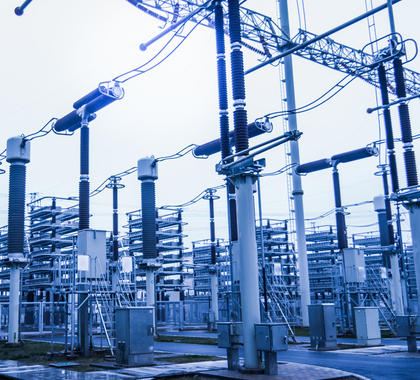Electricity is the most important and convenient way to consume energy. Without it, we’d literally be living in the “Dark Ages.” However, we often forget that it takes energy to make energy.
With the electricity generation mix changing dramatically in recent years, this is no simple task. There is no more disputing it: the combination of too few power plants being built and too many serviceable power plants being shuttered prematurely threatens the viability of America’s power supply. How well — or poorly — power systems address the problem will be critical to ensuring a reliable, affordable and secure supply of energy in the years ahead.
A decade ago, about 50 percent of the electricity consumed in the United States came from coal-fired generation plants. Today, natural gas is the leader, providing more than 50 percent, while coal’s share has dropped to less than 30 percent. In fact, coal capacity in the United States has fallen by more than a third since 2010, and another 25 percent of today’s fleet is set to close by 2025.
Nuclear plants, which provide about 19 percent, also are going offline. Five plants, with a combined capacity of 43 gigawatts, have shut down since 2013 and another eight, with a combined capacity of 85 gigawatts, are scheduled for retirement over the next six years. That’s almost enough power to serve the entire state of California. The planned closing of Indian Point on the Hudson River alone will remove 2 gigawatts of power from the grid, an amount equal to nearly 25 percent of New York City’s electricity consumption.
Unlike natural gas, coal and nuclear power are not dependent on just-in-time fuel delivery. Coal plants, in particular, have proven their value in ramping up electricity production in periods of extreme cold when other power sources cannot.
Wind and solar, though growing rapidly, account for only about 5 percent of generation capacity. However, growing dependence on renewables and gas poses serious challenges to grid stability and reliability.
Low prices do not mean that wind and solar can replace conventional power plants anytime soon. They are great when the wind is blowing and the sun is shining, but that is not always the case. Because large-scale battery storage at a reasonable cost is not yet on the horizon, utilities have to invest more in backup generation, which is typically natural gas peaking plants. Furthermore, wind and solar can’t scale up fast enough to offset the loss of coal and nuclear power. And if federal and state subsidies to renewables should go away, the attractiveness of wind and solar investments is likely to diminish quickly.
Right now, domestic gas is cheap and abundant, but that won’t always be the case. A global market for natural gas is evolving, and the United States is becoming a major player. Indeed, within a few years, America is projected to become the world’s second-largest exporter of liquefied natural gas (LNG). A decade from now, according to a recent forecast by the World Bank, average gas prices will be at least 50 percent higher than they are today, making gas-fired power generation a more expensive proposition.
Unlike renewables and natural gas peaking units, coal and nuclear plants are “always on,” so the loss of this base-load power is the most serious threat to power grid integrity. Unfortunately, some system operators are not assigning value to the resiliency attributes of the base-load plants providing power to their grids. Such is the case with PJM, the nation’s largest regional transmission operator that provides electricity to 65 million people in 13 mid-eastern and mid-western states as well as the District of Columbia.
In an unusual move, senior executives of four utilities that rely on PJM to transmit their power — Public Service Enterprise Group, Exelon Corporation, FirstEnergy Corporation and Duke Energy — recently sent a letter to the grid operator imploring PJM to adopt market reforms that recognize the importance of their coal and nuclear plants in assuring grid resiliency and reliability. They argue that pricing in the wholesale market, which may be based on the marginal cost of natural gas or the feed-in tariffs of renewables, is not adequately compensating utilities for the reliability of their base-load power plants.
They also want PJM to recognize the importance of fuel diversity to grid reliability and the potential risks to the grid from premature retirements of coal and nuclear power plants.
All power grids, for that matter, must adopt pricing mechanisms that ensure fuel diversity and an adequate reserve margin. Otherwise, the nation’s system operators will be unprepared for heatwaves, polar vortices, spikes in natural gas prices, cyber attacks and other disruptive events.
[Originally Published at The Hill]





